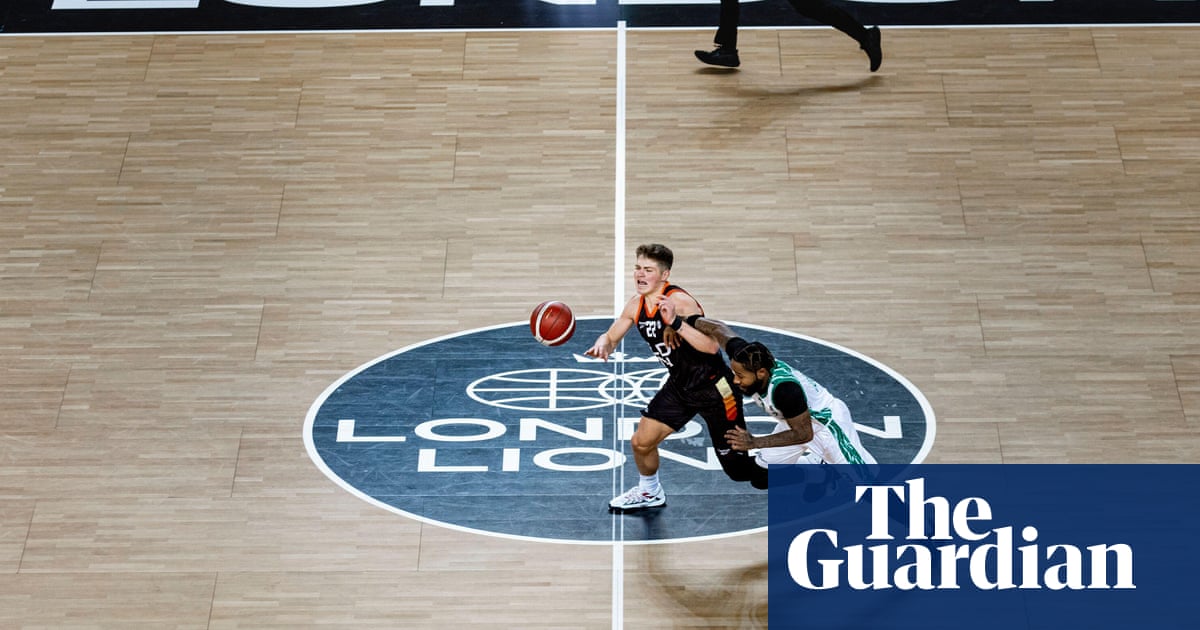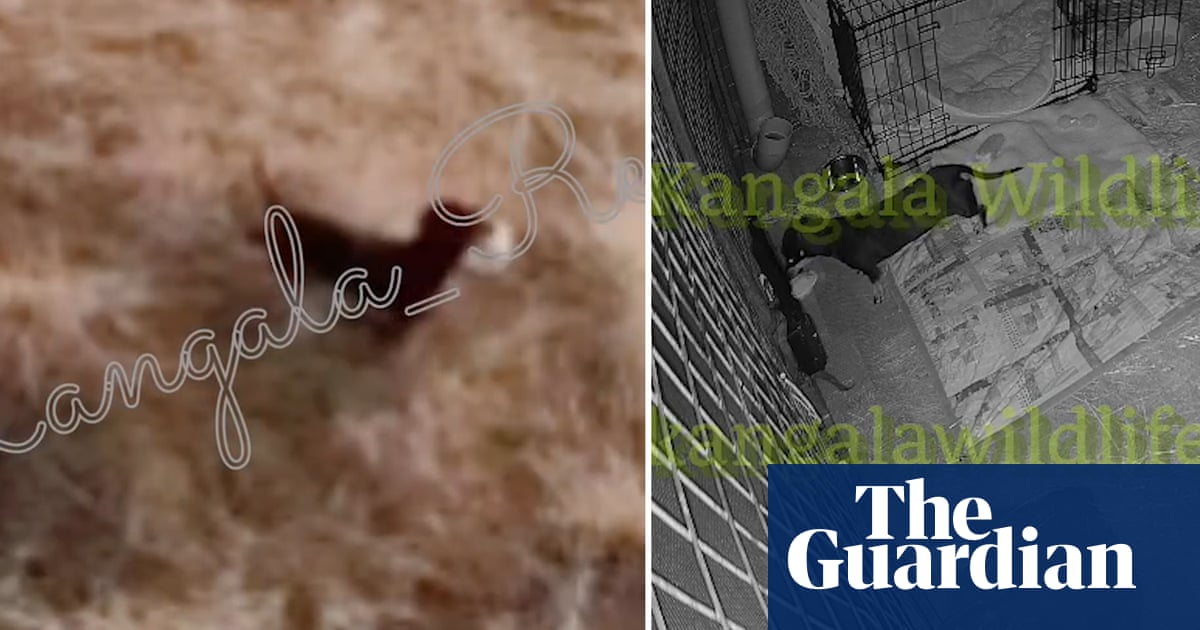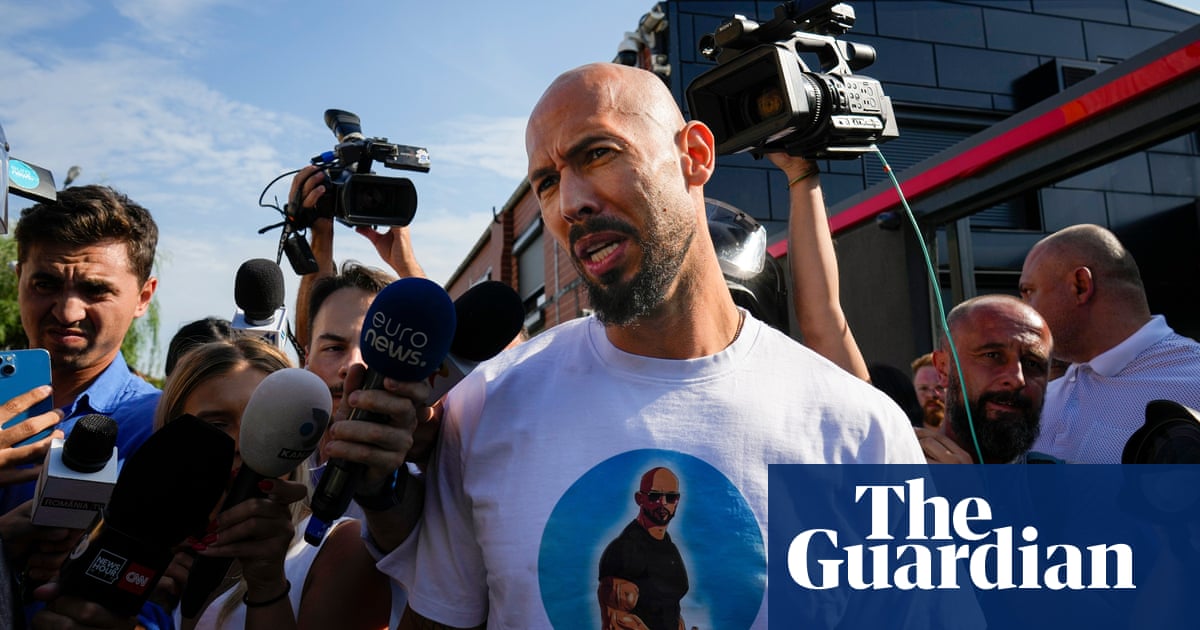Matthew Reum was driving home late on a dark, foggy night in Indiana when his headlights landed on what looked like a deer. As he swerved, his truck barrel-rolled down a ravine, into the creek beneath Interstate 94.
It was 20 December 2023, and Reum, a boiler-man, was 27. He was flung between his seat and the ceiling, losing consciousness as the airbags activated and the windows shattered around him. He remembers coming to and finding he was wet, it was dark and “not miserably cold, but it’s winter,” he says, “so it’s probably 30F [-1C]”. He knew he didn’t have any food or water in the car, but wasn’t too concerned. Someone must have seen him swerve, he thought.
Unable to free himself from the truck, he sounded the horn, but it was silent, as was the vehicle’s onboard emergency call system. He searched for his phone and called out to Siri, both to no avail. He then began yelling for help. “In my mind, I’m doing everything I’m supposed to do in a situation like that,” says Reum, a fan of TV survival shows such as Man Vs Wild and Naked and Afraid. “There’s a lot of small things I’ve picked up and my mind’s just scrolling through them, trying to find what I need to do to survive. I probably do that for the better part of an hour.”
No one came that night.

Matthew Reum visits for the site of the crash for the first time.
At first, no one even knew Reum was missing. Since graduating from high school in 2014, he had worked at power plants, refineries and steel mills, often taking jobs out of state and staying away for months at a time. “Most holidays, I would either spend working, because you get great money, or I would be out travelling and enjoying life,” he says. The year before, he had gone camping by himself for Christmas. “I’ve always liked being outdoors, just that sense of peace and calm.”
He was off work for the holidays when he crashed, so colleagues didn’t notice his absence, and friends and family knew he had planned to attend a funeral in Missouri before heading to Colorado for a ski trip. “No one knew where I was,” he says in his book about the ordeal, Still Standing. “No one would think to come looking.”
As it dawned on him that help might not arrive imminently, or at all, he also became more aware of his injuries. “My face is cut up, and I’ve got window glass all over me,” he says. “My right hand is already starting to swell – I don’t know if that’s sprained or broken, I just know that it’s hurting, but I’m also trying not to let it get the best of me.”
The truck had landed engine first, the engine hood crumpling inwards, obstructing his view out of the windscreen. His legs were trapped, with the steering column and dashboard pushed towards his lap. “There is stuff digging into my shin – I can’t tell what, but I can wiggle my toes on my right foot,” he says. “I notice I’m not really able to feel part of my left leg any more. I’m thinking, this is just a horrible dream. My brain is still in disbelief.”
Despite his predicament, Reum focused on keeping clean and hydrated. “I figured if I stayed on top of those, I’d be able to survive until someone found me.” On the second day, it rained. “My truck had a sunroof, which had shattered during the wreck, but there was a sunscreen that I realised I could fold to direct the rain.” At first, he drank the rainwater by cupping it in his hands, “and that is the worst water I have ever tasted. It’s everything that’s been washed off the highway: diesel and rubber from car tires, and dirt and mud and animal matter. It tasted like death.” He changed tack, using a spare pair of sweatpants as an improvised filter, then giving himself a sponge bath.

On the back seat, there was a toolkit. “I start pulling and yanking at all the bits of the dash that have broken off, tearing it off and throwing it outside my truck. If it had a nut or bolt on it, I was trying to take it apart – not just to get out of there but to give myself a little bit more room. It was also giving me a sense of accomplishment, helping my mental and emotional state just to have these little victories.”
But for every triumph, there were failures that left him feeling defeated. He could hear hundreds of cars driving across the bridge above him, but wasn’t able to alert them. He considered amputating his own legs, to escape the truck. “A lot of my lowest points coincided with when I didn’t have any water, which can wreak havoc on your brain. It felt like I made more progress and was more hopeful when it rained.”
As the days passed, “there was definitely a sense of panic”, he says, “but I’ve not had the best circumstances growing up – a lot of the time, that panic and emotion have to be put on the backburner while I figure out what to do”. In his book, he writes about how he was diagnosed with Reactive Attachment Disorder (RAD) as a teenager, a condition common among those who spent their childhoods in eastern bloc orphanages, as Reum did before he was adopted from Kaliningrad, Russia, when he was three.

Reum was also diagnosed with ADHD as a child and seemed to be “perpetually grounded”. When he was 13, he was sent to a strict Christian boarding school in Missouri, a place he describes as “both a prison and a sanctuary … It was there I discovered my resilience, capacity for growth, and underlying spirit of survival”. While most of his peers only stayed at the school for a year, Reum remained for four, and had little contact with his parents. So, he says, being trapped in the wreckage of the truck “isn’t the first hard thing I’ve been through”.
On Christmas Day, five days into his ordeal, Reum began to hallucinate. He thought the truck was surrounded by small critters he might catch and eat for sustenance. “I decided to do something really different for the holidays,” he wrote in his journal, “I’m camping in my truck … indefinitely.” Initially, he says, he used the journal as a way to keep track of his mental health, and as time went on, he wrote goodbyes to friends and family, along with his own obituary. By the time he was discovered, he thought, he might not be identifiable. “I wanted people to know how hard I’d fought to get out of this horrible situation and how I’d hung on until the last possible moment,” he says in his memoir.
Two local fishermen, Mario Garcia and his son-in-law Nivardo De La Torre, were out scouting for fishing holes when they happened upon the truck. This was six days after Reum swerved, and he was asleep.

A makeshift curtain was pulled over the truck window, and Reum woke to see a head sticking through. “I don’t know if I’m still hallucinating or if it’s real, and neither one of us can really believe what’s going on or what we’re seeing,” he says. De La Torre called 911 and flagged down emergency responders, who cut Reum out of the wreckage and airlifted him to Memorial hospital in South Bend. “Some of the firefighters didn’t see me making it; they thought I might die on the flight there,” says Reum, “so I’m glad I showed them wrong.”
He remained at the hospital for about three weeks. “They ran every test on me – I had about 18 X-rays – and they were pumping me full of medication and nutrients trying to get me in a stable state.” He had shattered the bones in his right hand and torn tendons, which needed surgery. His right leg was bruised and, “in my own efforts to get out, I had worn through the skin to the bone, and two bones were actually fractured”. Gangrene had set in in his left leg, and doctors were worried about the spread of infection. The decision was made to amputate the leg, below the knee at first. But, after it became clear the remaining tissue was not responding to treatment, a second amputation was made above the knee. Reum says he told the doctors to do what they needed to do. “It didn’t bother me because I thought I was going to have to do it myself!”
During his six days in the wreck, Reum had lost 23lb (10kg), so a big part of his hospital rehab involved eating as much as he could. He had physical therapy and occupational therapy three times a day, using a walker or a wheelchair. “I didn’t have a prosthetic at that point, so it was teaching me to do life on one leg.”

A prosthetic was fitted in April last year, but it’s not perfect – he can’t climb a ladder, and snow is challenging. He has more surgeries scheduled for this year – another revision on his hand, as well as spinal cord surgery, because something in his spine is pushing against his sciatic nerve, causing it to swell. His amputated leg will also be shortened, to better align his knees, and a titanium rod put through his femur so a new prosthetic can be connected more comfortably.
There is an increased mortality rate among amputees so Reum is determined to stay as active as possible. He rarely uses a wheelchair, goes to the gym five or six times a week and has invested in a running prosthetic – he says that sunrise runs always lifted his spirits prior to the accident. He’s been slower to address the impact on his mental health. “Everybody said: ‘You need to talk to a therapist, you probably have PTSD.’ But I’m hard-headed, stubborn; I don’t like doing things unless I want to do them.” At the start of this year though, he began therapy.
Reum stayed in touch with Garcia and De La Torre, whom he credits with saving his life, and is keen to share his story as he continues his recovery. “We go through these horrific tragedies and our brains adapt to overcome and become stronger,” he says. His book is dedicated to his grandfather, and to an uncle who lost a leg to cancer, who “taught me we are not defined by our limbs”. He has been unable to return to work since the accident, but he graduated in May with an associate of applied science (two-year) degree at Ivy Tech Community College.
His experience, he says, often resonates with others who have been through significant trauma. “That feeling of being given a new lease on life is highly prevalent for a lot of people who have been through life or death situations. I’m not immune to depression or anxiety or any of that now, but it’s definitely easier for me to handle – just knowing what I’ve gone through, and the fact that I’ve made it.”
Still Standing: The Seven Miracles of Matthew Reum by Erika Celeste and Matthew Reum is available now.

 3 months ago
72
3 months ago
72

















































